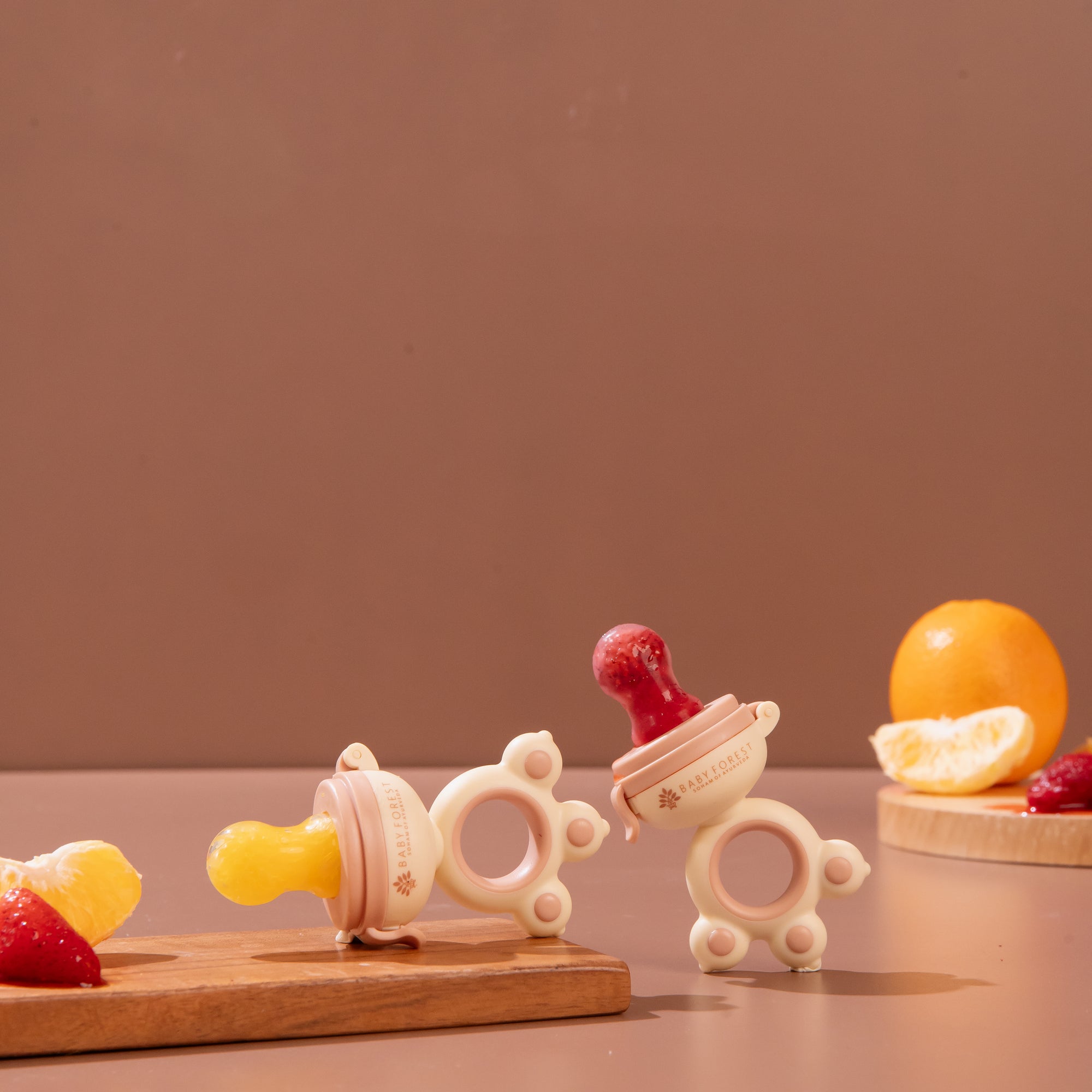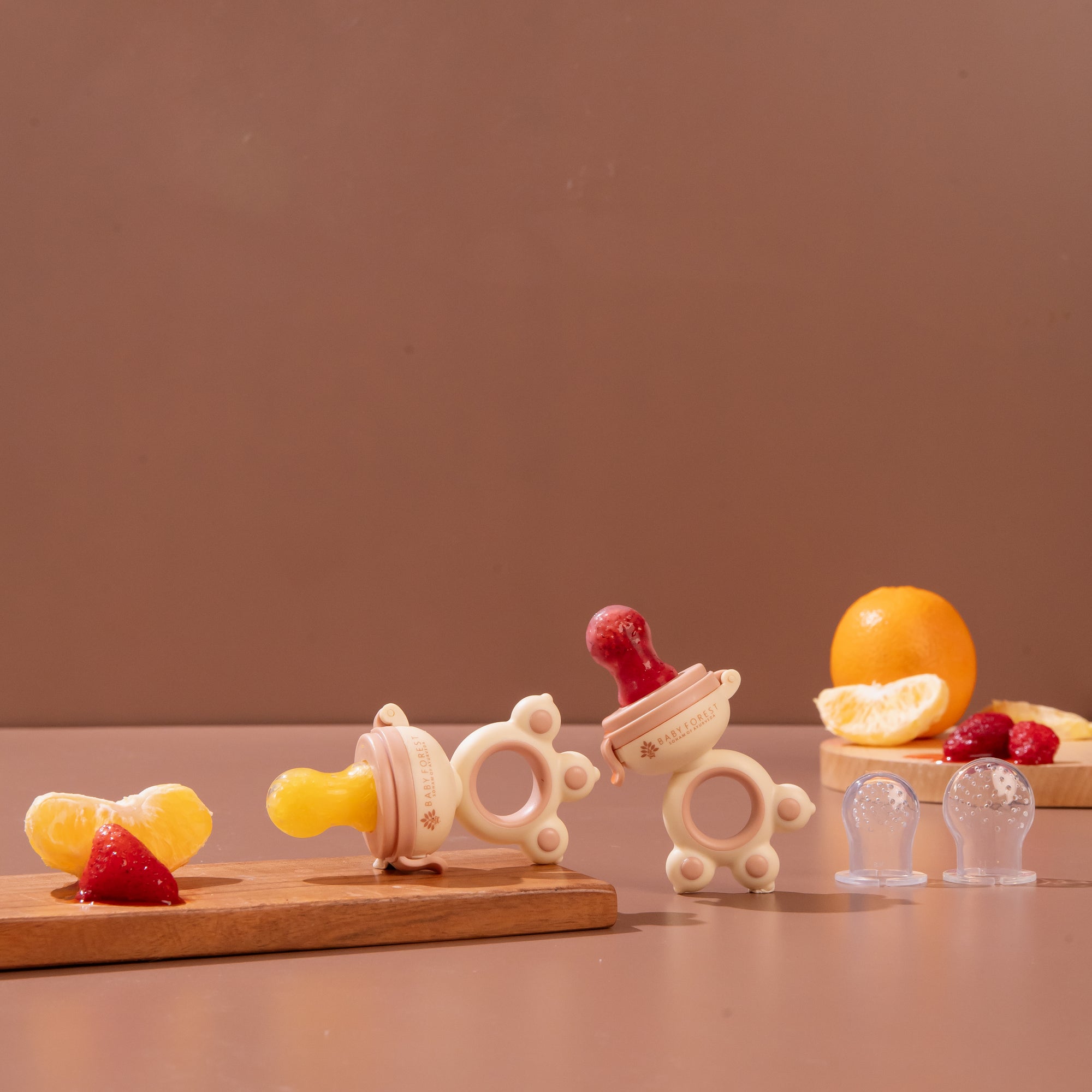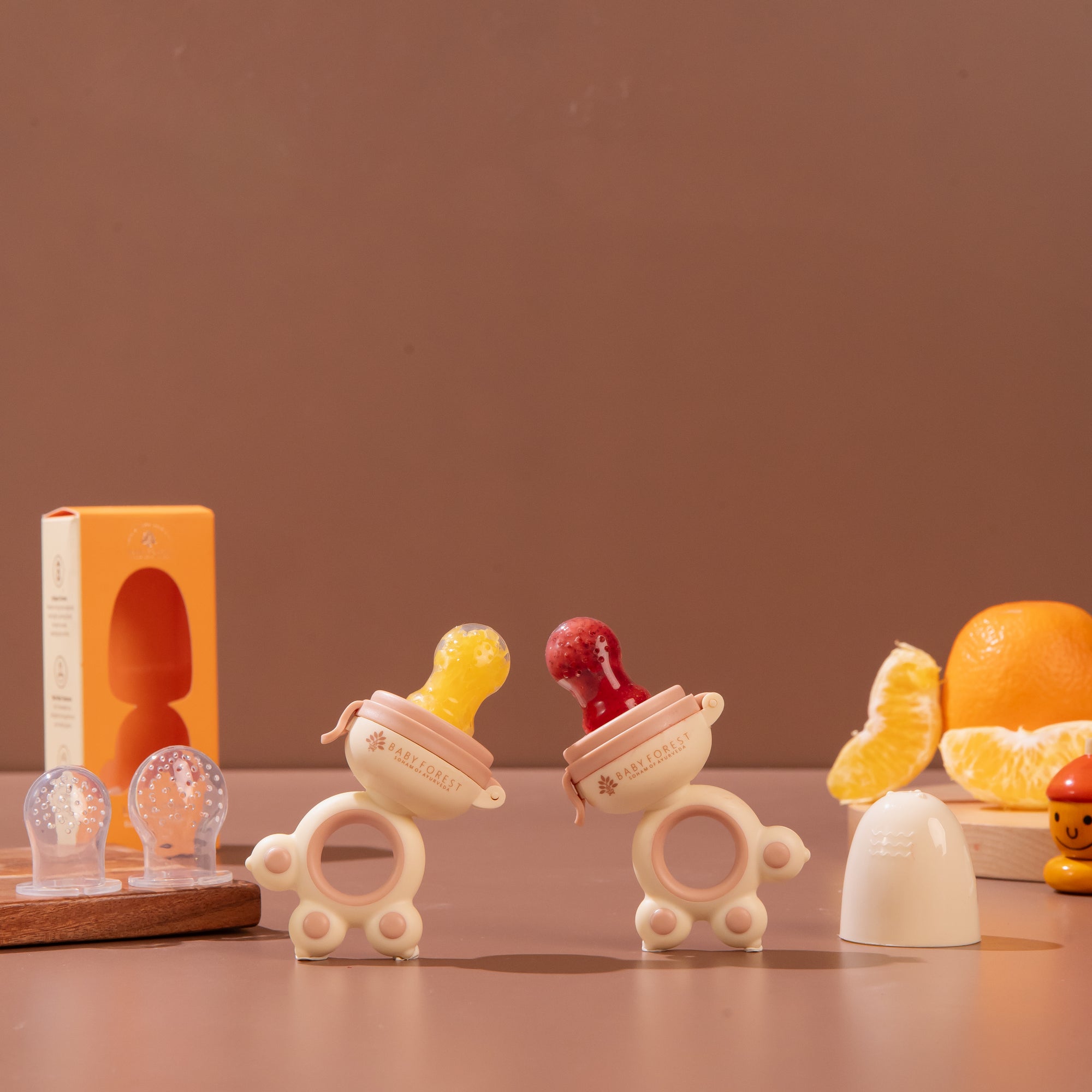Your Baby Benefits

Food-Grade Material
Crafted from the highest quality, BPA-free materials, completely safe for your baby.
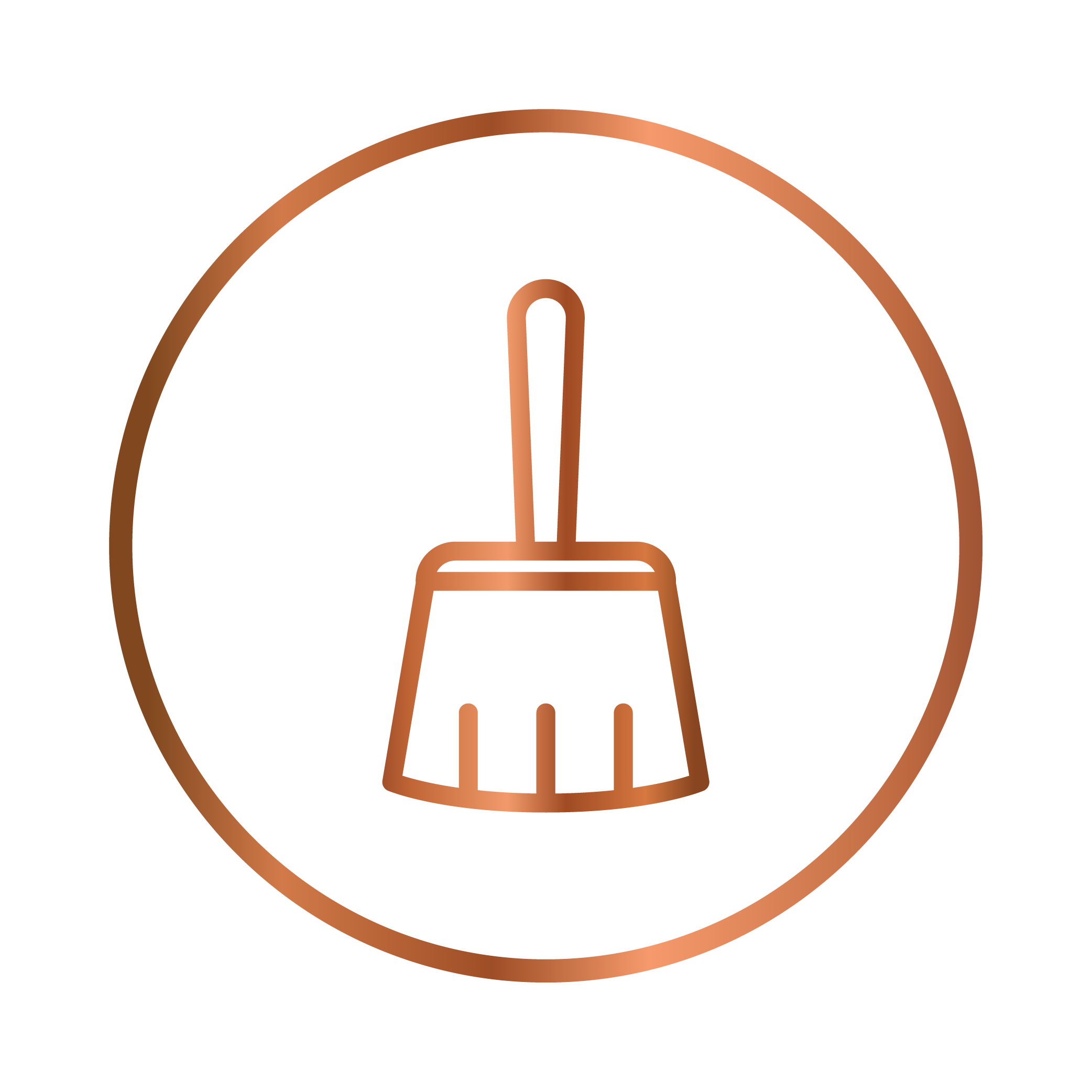
Easy to Clean
The snap-lock closure allows for easy disassembly and thorough cleaning to maintain hygiene.
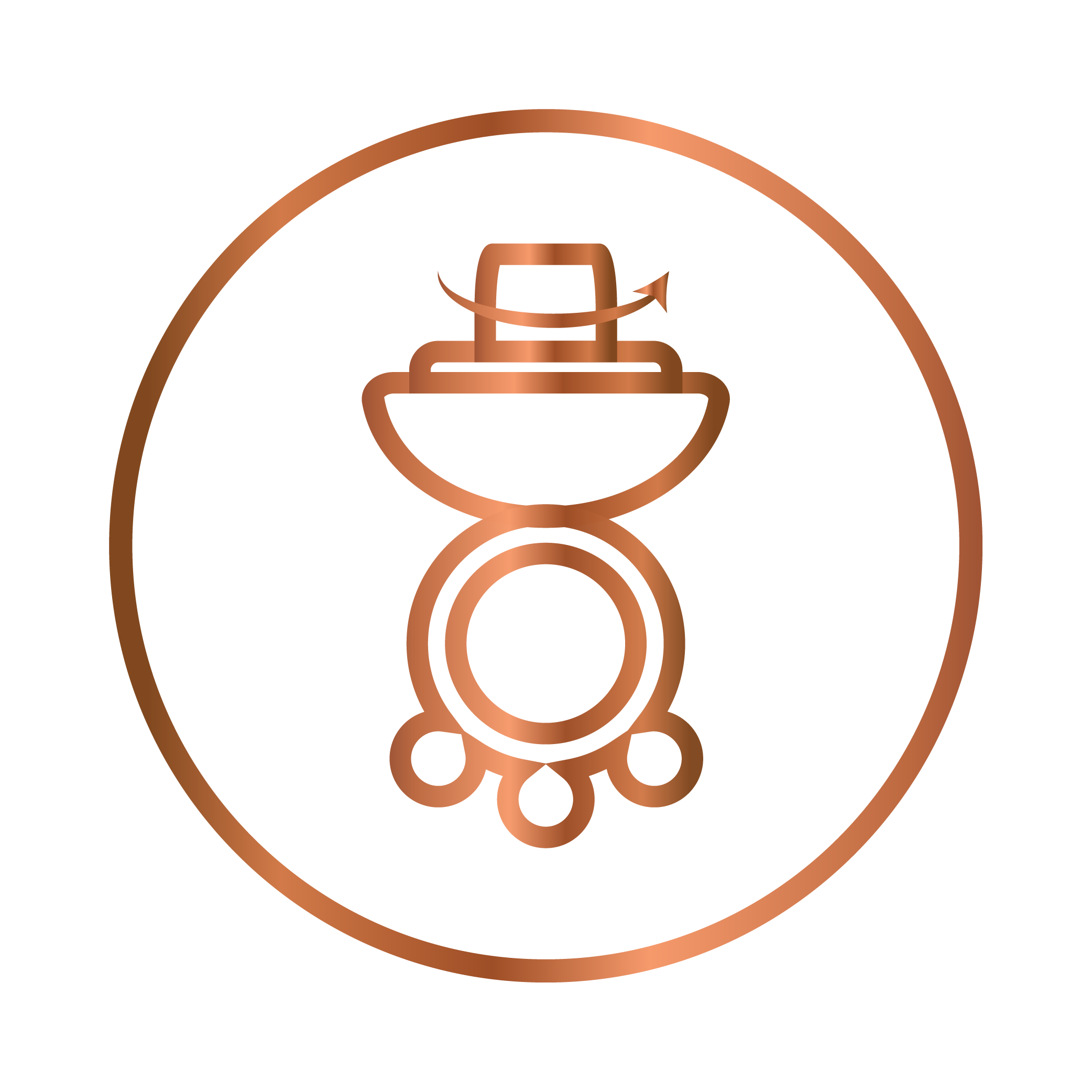
Unique Turner
According to the baby's consumption, the counterclockwise knob handle will continue to push the food.
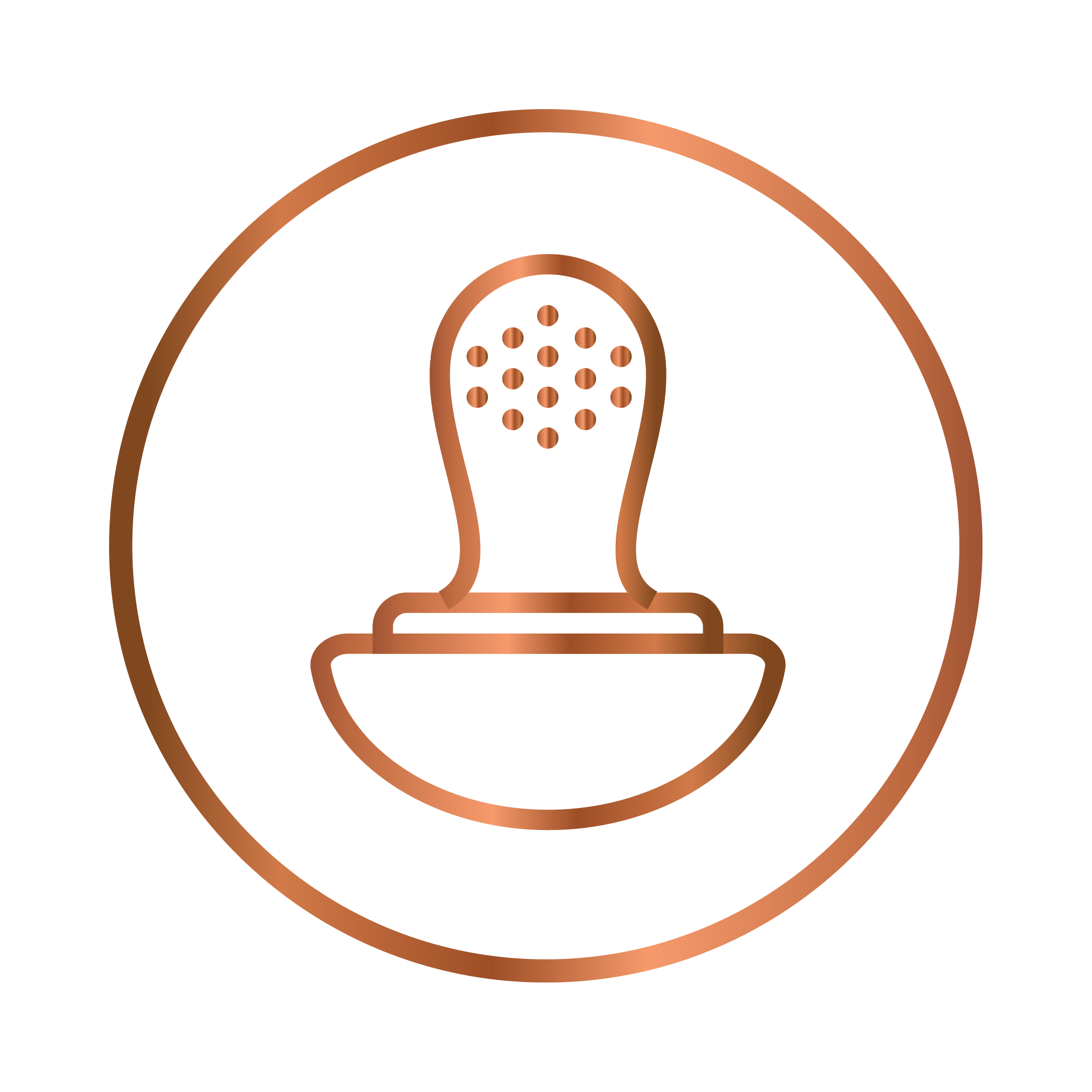
Skin-like Texture
Provides skin-like comfort for a natural, soothing experience for your little one.
FAQs
At what age can my baby start using a fruit pacifier?
Babies can start using a fruit pacifier at around 6 months of age, when they are starting their weaning journey. It's ideal for teething babies and those learning to self-feed. While choosing a fruit pacifier, make sure that it is soft, made with food-grade material, and is easy to hold for small hands. Always supervise during use and choose pacifiers according to age-appropriate sizes.
How do I clean the fruit pacifier?
Rinse the pacifier under warm running water right after use. Use baby-safe cleaners and a soft brush to clean the pacifier thoroughly. Some pacifiers are designed to be dishwasher safe for easy cleaning. Ensure that all parts of the fruit pacifier are fully dry before the next use, to prevent mould or bacterial buildup.
Are fruit pacifiers good for babies?
Yes. Baby fruit pacifiers are considered good for babies as they help introduce new foods in a safe way while reducing the risk of choking. They also soothe teething discomfort and encourage early self-feeding, making them both a practical and developmental tool.
How to know when to replace the pacifier?
Always check the teat before each use. If you notice any cracks, discoloration, thinning, or tears, it's time to replace the pacifier to ensure safety. Regular wear and tear is normal, and replacing the teat every few months keeps feeding hygienic and risk-free.
Can I use a fruit pacifier with foods other than fruit?
Yes. While fruits are most common, you can also use soft-cooked vegetables or chilled foods like cucumber or sweet potato. These not only expand your baby’s taste palate but also provide extra relief during teething.
Can the pacifier help my baby develop healthy eating habits?
Yes. By safely introducing natural flavors early on, the fruit pacifier helps babies develop a liking for fresh fruits and vegetables. This can encourage healthy eating patterns as they grow, reducing their preference for overly sweet or processed foods.
Can I sterilize the fruit pacifier?
Yes, most fruit pacifiers made of food-grade silicone can be safely sterilized by placing them in boiling water for a few minutes. Always check the manufacturer's cleaning instructions first. Sterilizing helps remove any lingering bacteria and keeps the pacifier hygienic. Make sure all parts are fully dry before reassembling or using again to prevent mould or residue buildup.
Is it okay to use the fruit pacifier daily?
Yes, it can be used daily as part of your baby’s routine. Just ensure that the pacifier is cleaned after each use and that fresh, age-appropriate foods are placed inside. Daily use can help babies explore new tastes and soothe their gums regularly.
Can I put frozen fruit in the pacifier?
Yes. Frozen fruits are a great choice, especially during teething, as they provide extra cooling relief for sore gums. Always cut the fruit into small pieces before placing it inside, and supervise your baby while they use it.
How long can I leave food in the pacifier?
It is recommended to only put in enough food for one feeding session, and remove any leftovers right after. Never store fruits or vegetables in the pacifier between uses, as it can lead to spoilage and bacterial growth. Always clean it thoroughly and add fresh food each time.
Which fruits are safe for a fruit pacifier?
Safe fruits for baby fruit pacifier include soft, ripe options like bananas, avocados, soft-skinned pears, peeled apples, and cooked sweet potatoes. You can also use strawberries, mangoes, watermelon, and blueberries. Ensure that the fruit is soft and easy to mash. Always check for allergies before trying new fruits, clean the feeder thoroughly after each use, and always supervise your baby to prevent choking.


